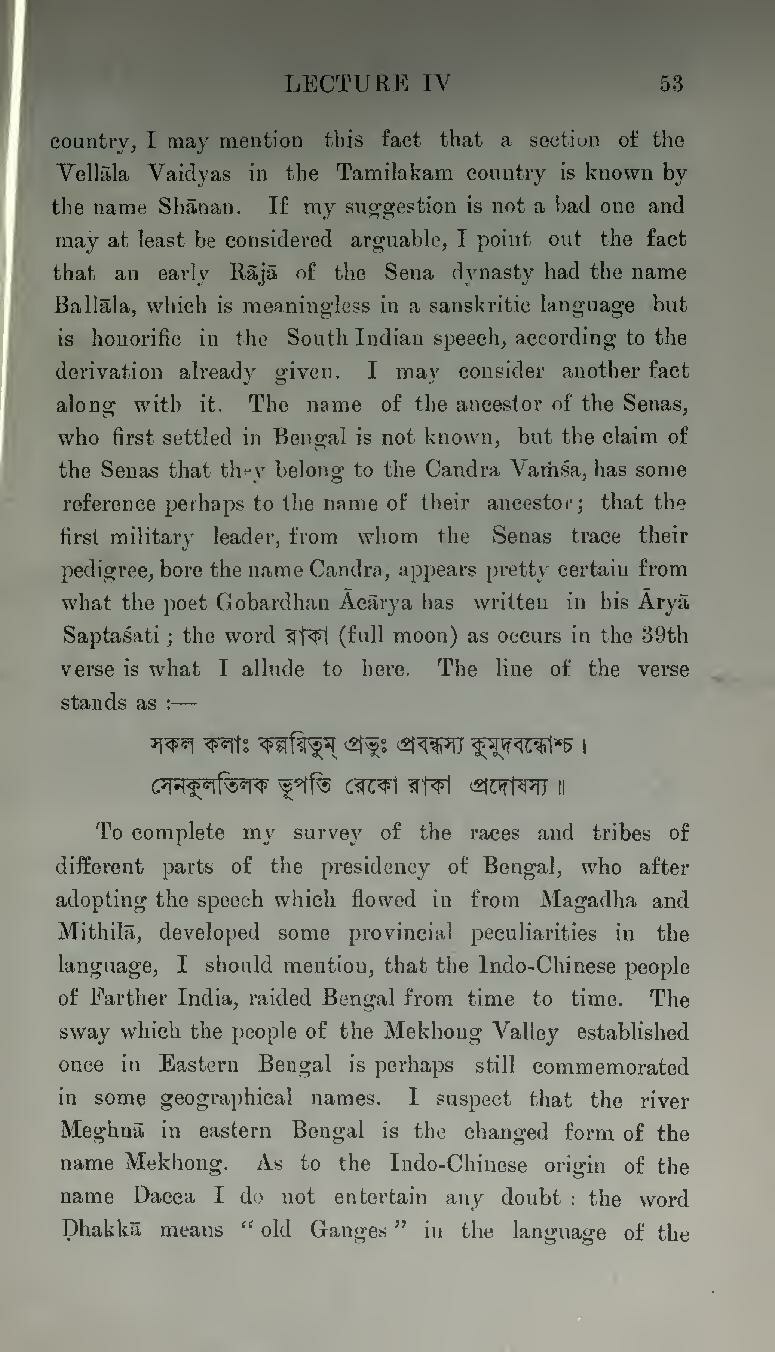country, I may mention this fact that a section of the Vellāla Vaidyas in the Tamilakam country is known by the name Shānan. If my suggestion is not a bad one and may at least be considered arguable, I point out the fact that an early Rājā of the Sena dynasty had the name Ballāla, which is meaningless in a sanskritic language but is honorific in the South Indian speech, according to the derivation already given. I may consider another fact along with it. The name of the ancestor of the Senas, who first settled in Bengal is not known, but the claim of the Senas that they belong to the Candra Vaṁśa, has some reference perhaps to the name of their ancestor; that the first military leader, from whom the Senas trace their pedigree, bore the name Candra, appears pretty certain from what the poet Gobardhan Ācārya has written in his Āryā Saptaśati; the word রাকা (full moon) as occurs in the 39th verse is what I allude to here. The line of the verse stands as:—
সকল কলাঃ কল্পয়িতুম্ প্রভুঃ প্রবন্ধস্য কুমুদবন্ধোশ্চ।
সেনকুলতিলক ভূপতি রেকো রাকা প্রদোষস্য॥
To complete my survey of the races and tribes of different parts of the presidency of Bengal, who after adopting the speech which flowed in from Magadha and Mithilā, developed some provincial peculiarities in the language, I should mention, that the Indo-Chinese people of Farther India, raided Bengal from time to time. The sway which the people of the Mekhong Valley established once in Eastern Bengal is perhaps still commemorated in some geographical names. I suspect that the river Meghnā in eastern Bengal is the changed form of the name Mekhong. As to the Indo-Chinese origin of the name Dacca I do not entertain any doubt: the word Ḍhakkā means "old Ganges" in the language of the
